Brewing Beer with Caramel and Crystal Malts
Published: August 12, 2025 at 6:26:45 AM UTC
Brewing beer with caramel and crystal malts is a complex art that deeply impacts the beer's flavor and color. Experts agree that using these malts is a simple yet effective way to alter beer's taste. This method allows brewers to create unique and complex flavors. These specialty grains bring depth and complexity to a wide range of beer styles. From pale ales to porters and stouts, they play a key role. Grasping the production process, types, and characteristics of caramel/crystal malts is vital for brewers. It helps them craft beers that stand out from the rest.
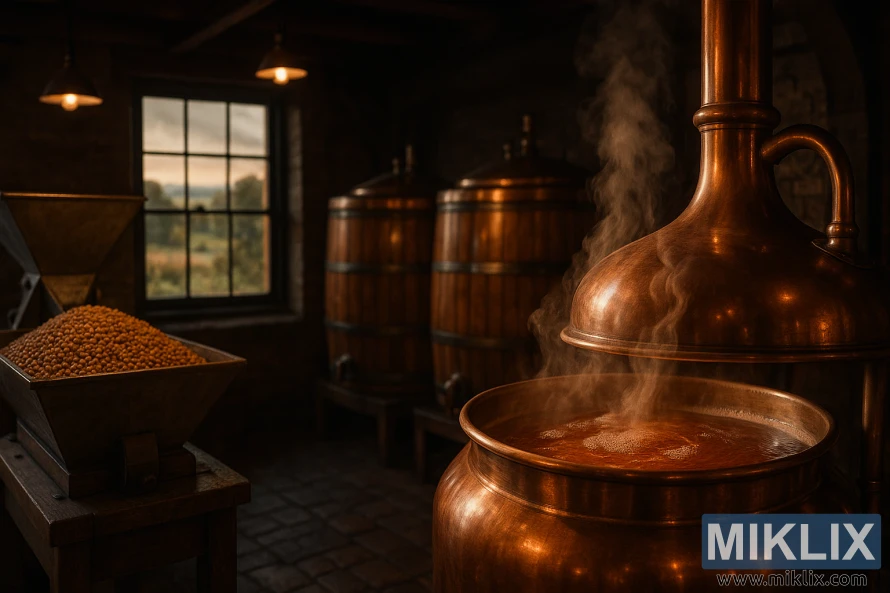
Key Takeaways
- Caramel and crystal malts are essential for adding flavor and color to beer.
- These specialty grains can be used in a variety of beer styles.
- The production process of caramel/crystal malts affects their characteristics.
- Understanding the role of these malts is critical for achieving desired beer profiles.
- Brewing with caramel/crystal malts requires a nuanced approach.
Understanding Caramel / Crystal Malt Fundamentals
The art of brewing with caramel and crystal malts starts with knowing how they're made and what they offer. These malts are created through a unique process. It involves steeping, germination, and stewing, which is different from making pale malts. The grains are heated in a closed system, preventing moisture loss. This leads to the formation of caramelized sugars, giving the malts their distinct characteristics.
The process for making caramel and crystal malts begins like pale malts, with steeping and germination. But the key difference lies in the stewing step. Here, the grains are heated, turning starches into fermentable sugars. These sugars then caramelize, adding to the malt's color and flavor.
The characteristics of caramel and crystal malts depend on the stewing process's temperature and duration. By adjusting these factors, different types of malts are created. For example, lighter crystal malts add a subtle sweetness, while darker caramel malts bring rich, caramel flavors.
It's important for brewers to understand the various types of caramel and crystal malts. These malts are categorized by their color, measured in Lovibond units. Common types include:
- Light crystal malts (10-20 °L) for adding subtle sweetness and complexity.
- Medium crystal malts (40-60 °L) for balancing sweetness and caramel flavors.
- Dark caramel malts (80-120 °L) for imparting deep, rich caramel flavors.
The malt characteristics, including diastatic power, are also key in brewing. Caramel and crystal malts have little to no diastatic power due to the stewing process. This means they're often used with other malts that have enough diastatic power to convert starches into fermentable sugars.
Understanding caramel and crystal malts is vital for brewers. It helps them formulate recipes and predict the outcomes of their brewing. This knowledge is essential for creating beers with the desired flavor and appearance.
The History of Caramel Malt in Brewing
The origins of caramel malt are deeply rooted in the evolution of brewing techniques. Brewers experimented with methods to enhance flavor and color, leading to the emergence of caramel malt as a key ingredient.
Caramel malt has been a staple in brewing for centuries, closely tied to the development of various beer styles. The process involves heating germinated barley to high temperatures, stopping germination and caramelizing sugars. This not only enriches the malt's color but also its flavor.
Crystal malts, another term for caramel malts, are used in many beer styles, from pale ales to porters. They are considered the most widely used specialty grain. Their versatility and ability to add depth and complexity have made them essential in many breweries. The use of caramel malt has been instrumental in shaping the characteristics of various beer styles, allowing brewers to create a wide range of flavors and colors.
The evolution of caramel malt in brewing showcases the innovative spirit of brewers throughout history. As brewing techniques have advanced, the use of caramel malt has adapted, enabling a greater variety of beer styles and flavors. Today, caramel malt remains a fundamental ingredient in many beer recipes, contributing to the rich diversity of beers available to consumers.
Understanding the history of caramel malt provides valuable insights into its role in brewing and its impact on beer evolution. By appreciating the development and application of caramel malt, brewers can better appreciate the craftsmanship involved in creating their favorite beers.
Different Types of Caramel / Crystal Malts Available
Caramel/crystal malts offer a range of options for brewers, each suited to various beer styles and flavors. These malts are vital for adding sweetness, color, and depth to beers. Knowing the different types is essential for brewers aiming to craft specific beer styles or unique flavors.
The terms "Crystal" and "Caramel" are often used interchangeably, though they might refer to different malting processes. Crystal malts are steepable, adding sweetness and color to both extract and all-grain brews. The variety in caramel/crystal malts is mainly based on their color ratings and the flavors they bring to beer.
Caramel/crystal malts range from light (e.g., 10°L) to dark (e.g., 120°L or more). Lighter malts offer a subtle sweetness and toasted hints, while darker ones provide a richer caramel flavor and deeper color. The choice of malt color depends on the desired beer style and flavor.
Some common types of caramel/crystal malts include:
- 10-20°L: Adds a light, subtle sweetness and is often used in pale ales and lagers.
- 40-60°L: Provides a balanced caramel flavor and is commonly used in amber ales and bocks.
- 80-120°L: Contributes a robust caramel flavor and is typically used in darker beers like porters and stouts.
Brewers can experiment with different types and combinations of caramel/crystal malts to achieve the desired flavor and color in their beers. Whether brewing a traditional style or innovating a new recipe, understanding the various types of caramel/crystal malts and their characteristics is key to successful brewing.
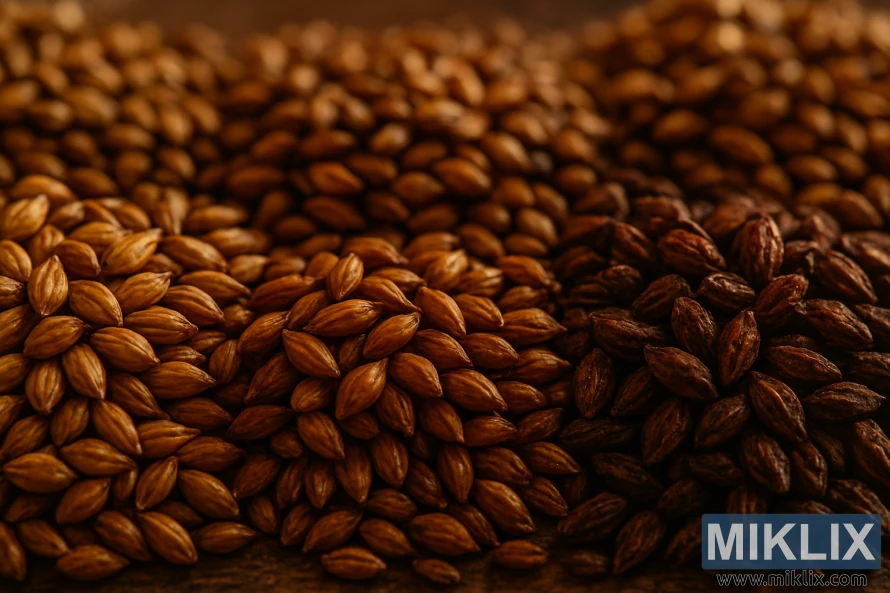
Impact on Beer Color and Appearance
Understanding how caramel/crystal malts affect beer color is key for brewers aiming for specific looks. The color and appearance of beer are significantly influenced by the type and amount of these malts used.
Caramel/crystal malts are rated by their color depth, usually in degrees Lovibond (°L), from 20 °L to about 200 °L. The most common crystals fall in the 30 ° to 40 °L range. The beer's final color is shaped by malt type, usage rate, and brewing conditions.
The role of caramel/crystal malts in achieving desired color profiles is vital. Brewers need to grasp the connections between malt color, beer style, and brewing techniques to get the look they want.
- The type of caramel/crystal malt used can significantly impact the beer's color.
- The usage rate of these malts affects the final color intensity.
- Brewing conditions, such as mashing temperature, can influence the extraction of color from the malts.
By carefully choosing and using caramel/crystal malts, brewers can achieve the desired beer color and appearance. This enhances the overall quality and appeal of their beer.
Flavor Contributions to Your Beer
Caramel and crystal malts add a rich array of flavors to beer, boosting its complexity and character. These malts can introduce flavors from sweet and caramel-like to nutty and roasted. The type and level of roasting or kilning determine these flavors.
Flavor profiles of caramel and crystal malts vary greatly. Lightly kilned caramel malts offer a subtle sweetness. On the other hand, heavily roasted crystal malts bring deep, rich flavors with notes of nuts or chocolate. Brewers must understand these contributions to craft complex and balanced beers.
The difference between caramel and crystal malts is subtle but significant. Crystal malts are roasted, while caramel malts can be either roasted or kilned. This distinction leads to varied flavor outcomes.
- Caramel malts can add a sweet, caramel-like flavor.
- Crystal malts contribute flavors that are often described as fruity or nutty.
- The level of roasting affects the intensity and character of the malt flavor.
When choosing caramel or crystal malts, consider the desired flavor profile. Selecting the right type and amount of malt allows brewers to tailor flavors for specific beer styles or personal preferences.
Brewing with caramel or crystal malts requires a deep understanding of their interaction with other recipe components. The blend of malt flavors with hops, yeast, and other ingredients opens up a wide range of flavor possibilities. This makes brewing both an art and a science.
Choosing the Right Crystal Malt for Your Recipe
Understanding how to choose the right crystal malt is essential for successful beer brewing. The selection of crystal malt plays a critical role in determining the flavor, color, and overall character of the beer.
When formulating a recipe, brewers must consider several factors, including the style of beer they aim to produce. Different beer styles require different types and amounts of crystal malt. For instance, pale ales, bitters, or ESBs may contain up to 20 percent crystal malt, as advised by brewing experts.
The flavor profile and color requirements of the beer are also critical considerations. Crystal malts are available in a range of colors, from light to dark, and each imparts unique flavors. Lighter crystal malts tend to add subtle, sweet flavors, while darker ones contribute richer, more complex flavors.
To choose the right crystal malt, brewers should consider the following factors:
- Beer style: Different styles require different crystal malt types and usage rates.
- Flavor profile: The desired flavor profile will guide the selection of crystal malt color and type.
- Color requirements: The color of the crystal malt will impact the final beer's color.
By understanding the relationships between malt type, usage rate, and brewing conditions, brewers can make informed decisions when selecting crystal malt for their recipes. This knowledge enables brewers to achieve the desired characteristics in their beer, whether it's a specific flavor profile, color, or overall style.
Effective crystal malt selection involves balancing the type and amount of malt with other ingredients and brewing techniques. By doing so, brewers can create a wide range of beer styles, from traditional ales to innovative, modern brews.
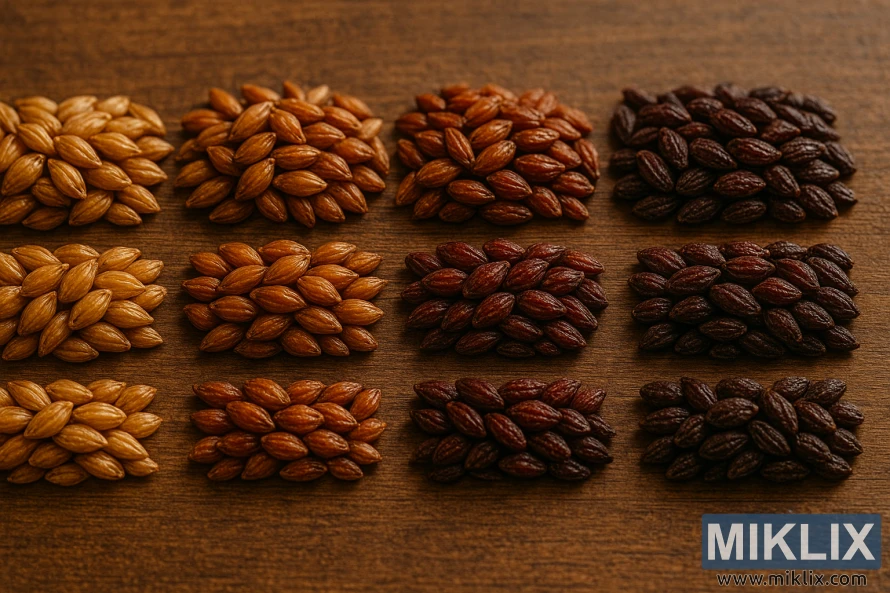
Proper Storage and Handling Methods
The longevity and performance of caramel/crystal malts depend on their storage and handling. Proper storage is key to maintaining quality and freshness. It ensures these malts remain in top condition.
To store caramel/crystal malts effectively, brewers should keep them in a cool, dry place. This spot should be away from direct light and moisture. Such conditions prevent the malt's quality from degrading. They also preserve its flavor and color.
Handling methods are also vital to prevent damage and contamination. Brewers must handle malts to minimize exposure to air, moisture, and contaminants. This involves using clean equipment and storing malts in airtight containers.
- Store malts in a cool, dry environment.
- Keep malts away from direct light.
- Use airtight containers to prevent moisture and contamination.
By implementing these storage and handling practices, brewers can ensure the quality control of their caramel/crystal malts. This leads to better beer production. Regular checks on the stored malts can help identify any issues early on.
Effective malt storage and handling are foundational to brewing high-quality beers. By prioritizing these aspects, brewers can maintain the integrity of their ingredients. This ensures consistent results in their brews.
Mashing Techniques for Crystal Malt
Optimizing mashing techniques is key when using crystal malt to get the right flavor and color in your beer. The mashing process is where the magic happens, laying the foundation for a great beer.
When mashing with crystal malt, it's important to know that enzymes from pale malt will break down any starch from the crystal malts. This means you don't have to worry about extracting starch from crystal malts. Instead, focus on extracting the flavors and colors that crystal malts are known for.
The brewing conditions during mashing, like temperature, pH, and water quality, greatly impact your beer's final outcome. Temperature, for example, affects enzyme activity. A higher temperature can lead to more efficient extraction but may also extract unwanted compounds.
- Temperature control is vital; the ideal range is between 152°F and 155°F for optimal enzymatic activity.
- pH levels should be slightly acidic, typically between 5.2 and 5.4, to support enzyme activity.
- Water quality is also critical, as it can significantly impact the flavor and character of the beer.
To optimize mashing techniques for crystal malt, brewers should consider the type of crystal malt being used and its specific characteristics. Different crystal malts have varying levels of color and flavor contributions. Understanding these differences is key to achieving the desired brewing outcomes.
- Choose the right crystal malt for your recipe based on the flavor and color profile you want to achieve.
- Adjust your mashing conditions according to the specific needs of your chosen malt.
- Monitor your brewing conditions closely to ensure they remain within the optimal range.
By mastering mashing techniques and understanding the nuances of crystal malt, brewers can significantly enhance the quality and character of their beers. This attention to detail in the mashing process can make all the difference in achieving a rich, complex flavor profile that showcases the full range of crystal malt's capabilities.
Common Beer Styles Using Caramel Malt
Caramel malt is key in shaping the taste and character of many beer styles, from pale ales to stouts. It's a versatile ingredient that adds depth, complexity, and a rich flavor to beers. Brewers use it to enhance the malt character without overpowering other ingredients.
In various beer styles, including mild ales, brown ales, and IPAs, caramel malt shines. It contributes to a balanced flavor and a satisfying mouthfeel. This makes it a favorite among brewers who value its ability to elevate the malt character.
- Pale Ales: Caramel malt adds a subtle sweetness and complexity to pale ales, making them more engaging.
- Porters and Stouts: These darker beers rely on caramel malt for its rich, malty flavors and deep color.
- Brown Ales: Caramel malt is essential in brown ales, providing a nutty, malty flavor profile.
- IPAs and Pale Ales: Some brewers use caramel malt in hoppy beers to balance out the bitterness with a touch of sweetness.
Understanding caramel malt's impact on different beer styles helps brewers make better choices in their recipes. Whether aiming for a traditional style or exploring new flavors, caramel malt is a valuable tool. It allows brewers to create unique and complex beers.
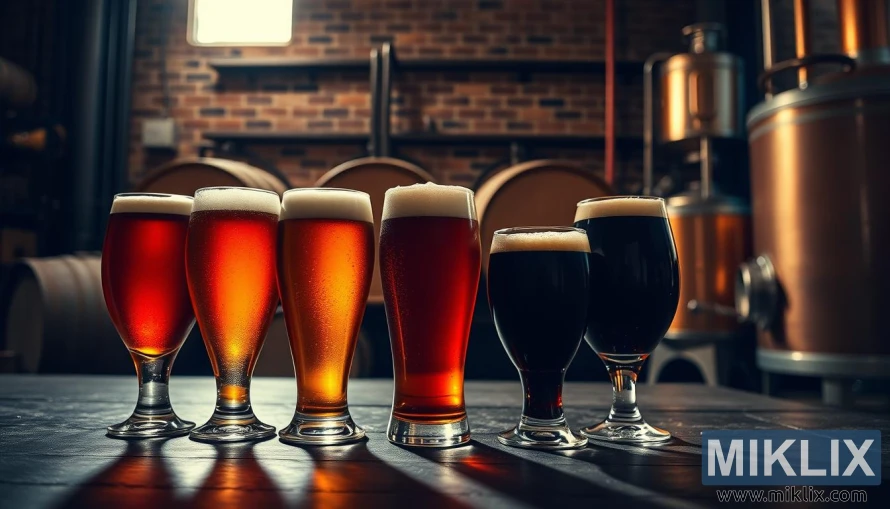
Recipe Formulation Guidelines
Creating a beer recipe with caramel/crystal malts demands a thorough grasp of their influence on the final brew. The choice and quantity of these malts can profoundly alter the beer's taste, hue, and essence. This knowledge is essential for brewers aiming to craft a balanced and complex beer.
To gauge the color impact of crystal malt, brewers employ a formula: "HCU = [weight (lb.) x color rating of grain (°L)]/volume of beer (gallons)". This equation aids in forecasting the beer's color and allows for necessary adjustments. It's a critical tool for brewers aiming to achieve their desired beer color.
In recipe formulation, brewers must weigh several factors. These include the type of caramel/crystal malt, its application rate, and the brewing environment. A meticulously planned recipe ensures a beer that is not only balanced but also delightful to drink.
- Choose the right type of caramel/crystal malt for your beer style.
- Calculate the correct amount of malt to achieve the desired color and flavor.
- Consider the impact of brewing conditions on the final product.
By meticulously considering these elements and employing accurate calculations, brewers can formulate a recipe. This recipe will yield a high-quality beer with the precise attributes they seek.
Combining Crystal Malts with Other Specialty Grains
Crystal malts are a versatile ingredient in brewing, capable of creating a rich tapestry of flavors when paired with other specialty grains. The success of these combinations hinges on understanding the unique flavor contributions of each ingredient. It's also important to grasp how these flavors interact with one another.
When choosing specialty grains to pair with crystal malts, brewers must consider the desired flavor profile. For example, combining crystal malts with chocolate malt can add deep, rich flavors to stouts or porters. On the other hand, pairing crystal malts with wheat malt can enhance the brightness and complexity of pale ales or wheat beers.
- Crystal malt and Munich malt for a robust, malty flavor
- Crystal malt and Victory malt for a toasted, biscuity character
- Crystal malt and roasted barley for a dry, roasted finish
Experimenting with different grain proportions is essential to find the perfect balance for your recipe. A good starting point is to use a base malt, add a specialty grain like crystal malt, and then fine-tune with other grains to achieve the desired flavor.
It's also vital to understand the limitations of combining crystal malts with other grains. Overusing certain grains can result in unbalanced flavors or unwanted characteristics. For instance, too much crystal malt can make a beer overly sweet, while too much roasted grain can make it overly bitter or dry.
Troubleshooting Common Issues
Troubleshooting is a critical step in brewing, essential when working with caramel/crystal malts. It helps identify and fix flavor and color problems. Brewers often face challenges like flavor imbalances and color inconsistencies. These issues can greatly affect the beer's quality.
Flavor imbalances are a common problem brewers encounter. This can show up as overly sweet or bitter tastes. To solve this, brewers should check the type and amount of caramel/crystal malt used. Different malts have different flavors. Proper mashing and consistent brewing processes also help balance flavors.
Color inconsistencies are another issue with caramel/crystal malts. The beer's color depends on the malt type and brewing techniques. To get consistent color, brewers must monitor mashing temperature and ensure proper malt crushing. Adjusting malt amounts can also help achieve the desired color.
To effectively troubleshoot these issues, brewers can follow a few key strategies:
- Carefully review the recipe and brewing process to identify any inconsistencies.
- Monitor the mashing temperature and ensure it's within the optimal range for the malt type.
- Adjust the amount of caramel/crystal malt used to achieve the desired flavor and color.
Understanding common issues with caramel/crystal malts and using effective troubleshooting strategies can improve beer quality and consistency. Whether you're new or experienced, knowing how to identify and fix problems with these malts is key to producing high-quality beers.
Advanced Brewing Techniques with Crystal Malt
Advanced brewing techniques with crystal malt open up a realm of possibilities for innovative brewers. By grasping the flavor contributions and interactions of crystal malt, brewers can craft complex and unique beer flavors.
Experimental approaches to brewing with crystal malt involve trying different mashing techniques. This includes decoction mashing or step mashing to bring out the desired flavors. Brewers can also experiment with different types of crystal malt. This includes those made from various base malts or kilned to different colors.
Some advanced brewing techniques that utilize crystal malt include:
- Using crystal malt to create complex flavor profiles in beer styles like bock or barley wine.
- Experimenting with different crystal malt varieties to add depth and nuance to beer flavors.
- Combining crystal malt with other specialty grains to create unique and complex beer styles.
By pushing the boundaries of what is possible with crystal malt, brewers can create innovative and delicious beers. These showcase the versatility of this ingredient. Whether you're a seasoned brewer or just starting out, experimenting with advanced brewing techniques using crystal malt can be a rewarding and exciting experience.
Quality Control and Assessment
Brewing with caramel/crystal malts demands strict quality control for the best beer flavor and look. It's essential to evaluate these malts carefully during the brewing process.
The quality of caramel/crystal malts greatly affects the beer's character. This includes its color, flavor, and overall look. Malt type, usage rate, and brewing conditions all influence the final product's quality.
To assess malt quality, brewers should focus on several key factors. These include:
- Malt color and consistency
- Moisture content
- Crush quality
Regular quality control checks help brewers spot issues early. This allows for adjustments to keep the beer's character on track. Brewers monitor the brewing process and the final product's characteristics closely.
By prioritizing quality control and assessment, brewers can ensure their beers consistently meet high standards. This enhances the brewing process and the final product's quality.
Commercial Brewing Applications
Using caramel/crystal malts in commercial brewing offers unique flavor opportunities and consistency challenges. As breweries grow, mastering these malts is key to quality beer production.
In commercial brewing, the interaction between malt type, usage rate, and brewing conditions is complex. The type of caramel/crystal malt used greatly affects the beer's color, flavor, and character. Breweries must choose the right malt for the desired beer style and production needs.
Challenges in large-scale brewing with caramel/crystal malts include maintaining batch consistency and ensuring proper storage and handling. Strategies to overcome these include:
- Implementing rigorous quality control measures to monitor malt quality and brewing conditions.
- Developing standardized procedures for mashing, lautering, and brewing to minimize variability.
- Investing in malt storage solutions that maintain optimal conditions to preserve malt freshness and performance.
Commercial breweries can innovate with caramel/crystal malts, experimenting with different types and rates to create unique beers. By understanding these malts' performance at scale, breweries can differentiate their products in a competitive market.
Some common beer styles that benefit from caramel/crystal malts in commercial brewing include:
- Amber Ales, which rely on the malts for their characteristic color and malty flavor.
- Bocks and Doppelbocks, where the malts contribute to a rich, complex flavor profile.
- Porters and Stouts, which often use caramel/crystal malts to enhance their roasted flavors and dark colors.
By mastering caramel/crystal malts, commercial breweries can achieve consistency, quality, and innovation in their beers. This meets consumer expectations and helps them stand out in the market.
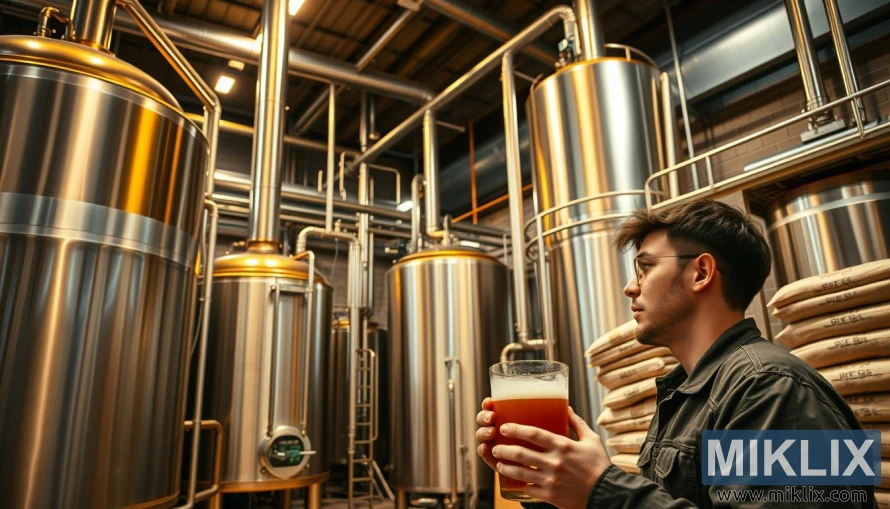
Conclusion
Brewing beer with caramel/crystal malts is an art that demands a deep understanding. It's about adding flavor, color, and complexity to beer. We've covered the basics, from how they're made to their types and characteristics. This knowledge is key to creating top-notch beers.
By mastering caramel/crystal malts, brewers can explore new possibilities in beer making. Whether you're experienced or new to brewing, the key is to experiment and innovate. Continuously refine your techniques to achieve the perfect flavor and style.
This guide has equipped brewers with the knowledge to craft recipes, mash with precision, and solve common problems. With this skill, you can elevate your brewing and create exceptional beers. These beers will highlight the rich flavors and colors of caramel/crystal malts.
Further Reading
If you enjoyed this post, you may also like these suggestions:
